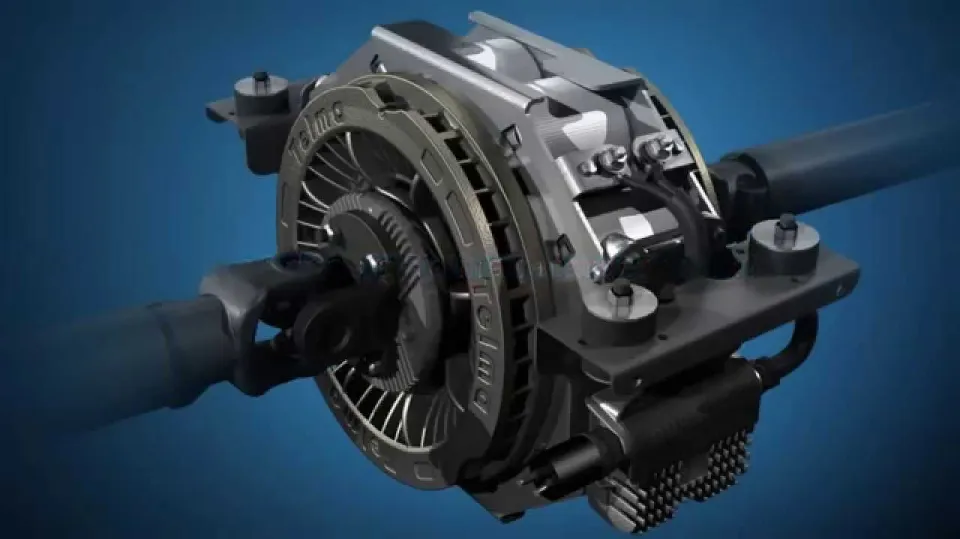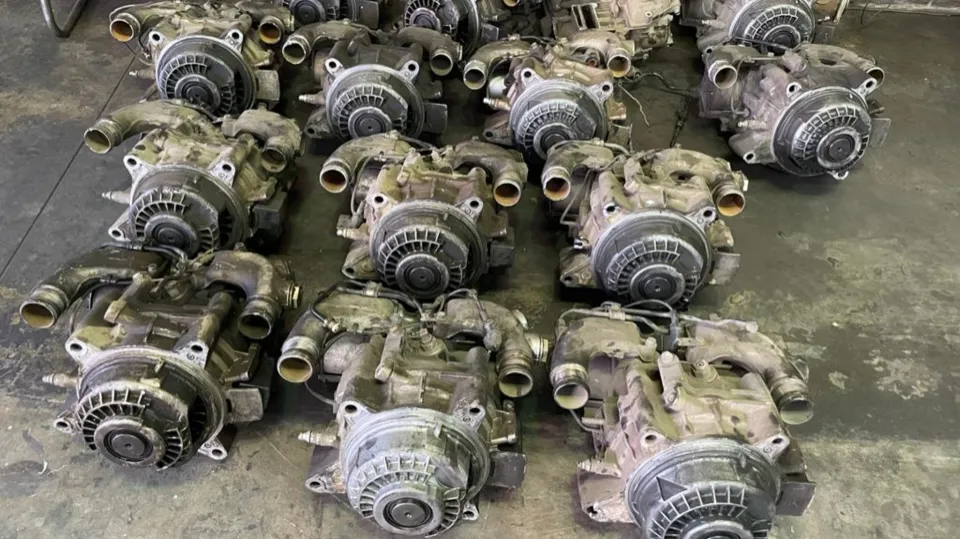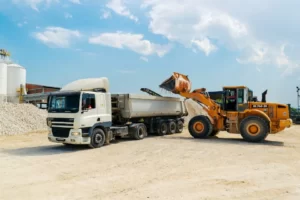
What Are Retarders On A Truck – What to Know
A device known as a retarder is typically used on heavy vehicles to supplement or take the place of some of the primary friction-based braking systems’ functionalities.
What Are Retarders on a Truck
The types of retarders that exist are a more complex topic that we should discuss later. Let’s start by discussing what retarders are in general. Knowing this will be very helpful, especially for newcomers who are not interested in trucks and want to learn more about a semi-trucks brakes. Without further ado, let’s get acquainted with the subject and discover what retarders on a truck are.

A retarder is something that retards, as the name suggests. This means that it slows down on purpose so the vehicle loses its momentum and comes to a stop.
Consider a torque converter or another object that is spinning quickly. An obvious illustration of this retardation process is the torque converter in automatic transmissions. There is a device inside the torque converter that uses hydraulic fluid to slow the driveshaft’s speed, decelerate the vehicle’s momentum, and assist in bringing the vehicle to a stop.
Therefore, if your vehicle has an automatic torque converter, you undoubtedly have one of these retarders. The vehicle loses momentum and slows down every time you take your foot off the gas. even without significant braking.
Although there are a few different types of these retarders that are used, the process in trucks is quite different. Which we are going to cover later on in the article. You should know what retarders are on a truck right now because that’s what’s important.
These are tools that aid in stopping your truck without generating friction like your typical braking system, which is typically a disc or drum brake design.
Why Retarders Are So Important to You
As a result, we now understand what retarders are on trucks and how they help the friction brakes on the wheels of the vehicle bring it to a complete stop.
Have you thought about why these retarders are so crucial to you as a truck driver, though? Why are they one of the things that no truck driver should survive without because they are so indispensable? Let’s elaborate more on this because you really need to know the importance of these brake retarders.
If you are a new truck driver, you must pass your driving test. Furthermore, there is a high likelihood of failure if you don’t know what a retarder is.
Let’s say you climbed a steep hill and now you need to descend it while the truck is loaded with heavy cargo.
You decide to apply the brakes suddenly, but the trailer simply swerves to one side, leaving you seriously injured or even dead.
Another scenario is when you use the standard brakes and they overheat, making it impossible for the truck to stop, which results in you hitting someone in the rear or ending up in a ditch. Both of these situations can be dangerous or even deadly.
Brake retarders were developed to address this issue. when approaching a downhill road that is steep, to reduce the vehicle’s momentum.
With no need for you to apply any brake pressure, the brake retarder will handle this task and gradually slow down the truck.
Because of this, you should be aware of the type of brake retarders you have on your truck and use them appropriately.
Types of Retarders on a Truck
Now that we have discussed what retarders are on trucks, we can move on to learning more about the different types of retarders that are on trucks.
There are a few various types of retarders in use today. While some of them are incredibly easy to understand, others are more difficult to do so. But we will make sure that we deliver the best answer to these questions.
We will briefly cover these types in the chapters that follow. But after that, we’ll go over them in greater detail and gain a much better understanding of how they operate. Let’s begin, then.
1. Exhaust Retarder
We now know what truck retarders are. Let’s now examine the first kind of retarder that is most frequently used on trucks.
Furthermore, the exhaust retarder falls under this category. Also known as the exhaust brake. How does the exhaust cause your car to stop, then?
There are techniques diesel engines employ to reduce the flow of exhaust gases, but doing so slows down the engine’s operation. The vehicle also slows down as a result of slowing the crankshaft’s rotation.
These retarders are among the best in terms of effectiveness and ease of comprehension. We will go into more detail later on regarding the operation of this type and the reasons it is so beneficial. We now know what truck retarders are. Let’s now talk about the second kind of retarder.
2. Jake Brake
We now understand what a truck’s retarder is; let’s look at the second kind of available retarders. And these are the Jake brake retarders. So what exactly is a Jake brake retarder?
So a Jake brake retarder is comparable to the earlier variety that we discussed. They are both engine retarders. which indicates that they lower the engine’s RPM. But each of these approaches uses a different strategy to accomplish this. The earlier method accomplished this by preventing exhaust gas egress; the Jake brake operates in a different manner.
In particular, the exhaust valves are being fiddled with by this system. It opens the valves just before the compression stroke ends and releases the compressed gas which is trapped in the cylinders and slows the vehicle in the process. I think it’s a pretty clever design. We’ll go into more detail about this design and its operation in the coming sections. Let’s proceed to the following system now.
3. Hydraulic
We know what are retarders on a truck, now let’s take a look at the next type of retarder which is the hydraulic retarder.
As we noted, a hydraulic retarder is something similar to a torque converter. The driveshaft and transmission of the car typically have this part mounted on them.
Therefore, when stopping power is required, hydraulic fluid is pumped into this component, and this fluid then adds some resistance to the spinning motion of the gear. It reduces the spinning motion by creating a viscous drag that the hydraulic fluid produces. This kind of retarder is frequently used on buses because it is effective.
The good thing about this retarder is that it is extremely quiet, often going unnoticed. Consequently, it is much more practical than the first two types we discussed earlier.
4. Electric
We now understand what a truck’s retarders are for, so let’s look at the final kind of retarder that is available. And this retarder is an electric model.
When it comes to where they are mounted, electric retarders and hydraulic retarders are quite similar. It is similarly mounted between the driveshaft and transmission.
The only difference is that this retarder works with the help of electromagnetic induction in order to provide retarding force. Although they are less frequent, there are still many trucks out there that can use these retarders. But why is it important to understand what a truck’s retarders are and what kinds there are? Let’s expand on this further next.
Why You Should Know All These Types of Truck Retarders
Retarders on a truck are now something we have learned about, along with the various types that are available. We can now move on to why you need to be aware of this information. Why is this necessary? Let’s elaborate in the following paragraphs and see why this is the key.
The CDL driver’s license is the primary reason why you need to be familiar with the types, uses, and definitions of retarders on trucks.
You simply need to be aware of this information if you decide to obtain a CDL driver’s license. Since how are you going to drive a semi-truck if you don’t know what an exhaust brake or a Jake brake is?
In order to operate a commercial vehicle with this kind of equipment installed, you really need to know this information.
You risk crashing if you don’t know how to descend a steep hill without using these features, which could also cause your standard brakes to overheat.
The fact that everyone is familiar with these types of brakes is another reason. Nobody was harmed by having additional information. You might eventually decide to sign up for a CDL. Therefore, being aware of this beforehand will help you spend less time learning how to prepare for and pass these exams. But enough on that.
Let’s learn about these brakes’ operation and some frequently asked questions in the chapters that follow. The exhaust brake and the Jake brakes are included in the engine braking that will receive the majority of our attention as we examine their characteristics and mode of operation.

What Are Retarders on a Truck: What is an Exhaust Brake
Since we now understand what truck retarders are, we can move on and thoroughly discuss the first kind of brake retarder. the exhaust brake, specifically.
What then does the exhaust brake do? On the hot side of the engine’s turbo, there is a special brake that was specifically designed for this application. It is consequently directly between the car’s turbo and exhaust.
As you can see, this system is primarily installed on turbo diesel applications. You will notice the exhaust brake as a big hump right next to the hot side of the turbo.
Even more straightforward and orderly applications exist. When it comes to the engineering of this type of brake, modern applications are a lot more compact and simplified. But how does this engine exhaust brake function?
How Do Exhaust Brakes Work?
Exhaust brakes work with the help of backpressure. So what exactly is backpressure? Backpressure occurs when the gases in the exhaust are prevented from escaping.
You can observe how the engine shuts off if you place something inside the exhaust. However, the gas passage is not entirely sealed off by the exhaust brake. So, there is enough gas passage for the engine to keep on working and slow down in the process. But why does the engine lose power?
As we previously stated, the engine slows down as a result of the backpressure buildup. Gases from the intake and exhaust systems should be distributed equally. Consequently, if you partially block the exhaust. Then you will only need 50% less air than usual.
Therefore, if less air is burned in the cylinders, the engine will produce less power. Additionally, the engine starts to sputter.
A simple butterfly flap that opens and closes serves as the exhaust brake. The actuators that open and close this brake come in a variety of designs, including pedal-operated ones, two-stage pressure controls, and pneumatic or hydraulic actuator valves. The answer largely depends on the application.
It’s helpful to know that these brakes make more noise than the commonly used standard brakes. Therefore, you should bear this in mind. As we now know what truck retarders are, let’s move on to the following category of brakes.
Conclusion to What Are Retarders on a Truck
We have talked a lot about truck retarders in this article. Our first lesson covered the definition of retarders and their purpose. The types of retarders that are available were then covered as we moved on.
We then discussed the reasons for knowing these various types, including the fact that you must understand them in order to obtain a CDL driving permit. The advantages and disadvantages of engine retarders were later explained to us.
FAQs
How Does a Retarder Work on a Truck?
An engine retarder captures the exhaust from the engine and compresses it so that the engine must work harder to push the gas out of the cylinders, and it therefore retards and slows the engine through resistance.
When Should a Retarder Brake Be Used?
Retarders are made to provide an additional slowing of the vehicle, such as regulating speed on long descents without using the main braking system. Engine brakes, also referred to as engine retarders, assist in preserving the primary braking system for emergency braking.
What is the Difference Between Retarder and Exhaust Brake?
A retarder is a hydraulic or electromagnetic component mounted on the driveshaft or the transmission’s output. The purpose of an exhaust brake is to prevent the engine from recovering the energy it expended by compressing the air in the cylinders by opening the exhaust valves at the end of the compression stroke.



Average Rating